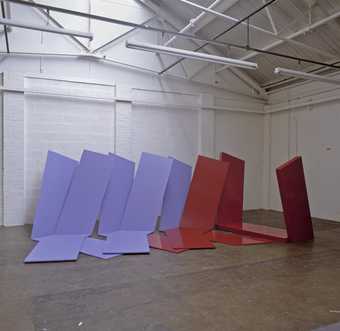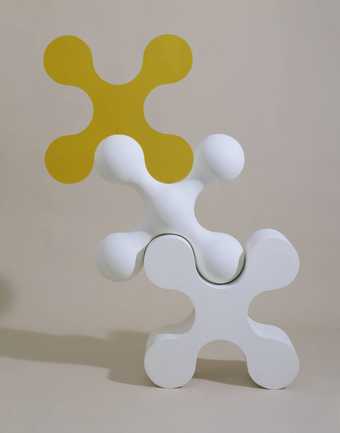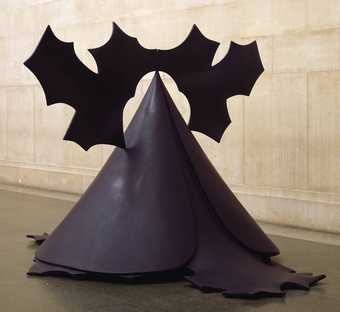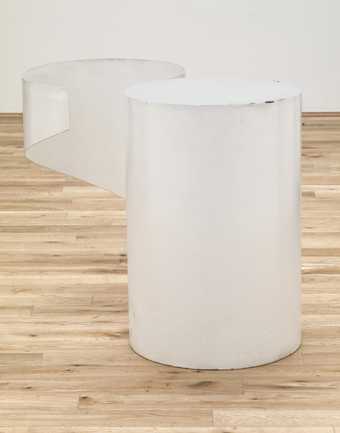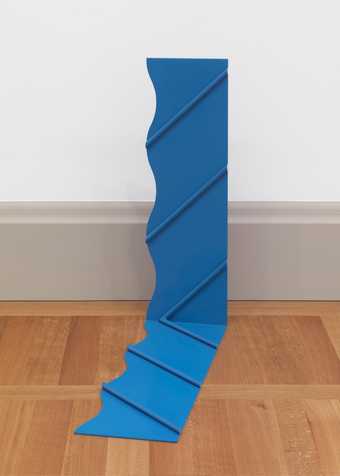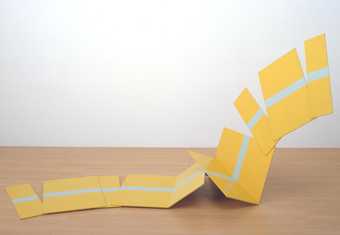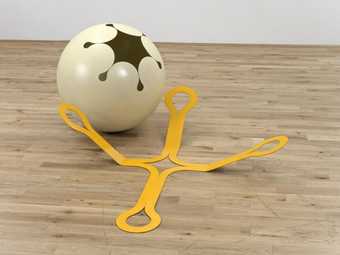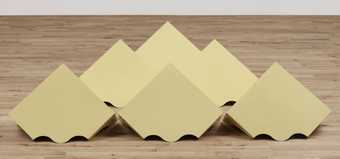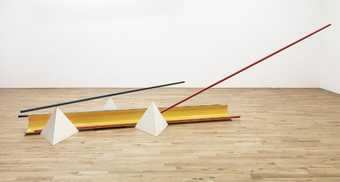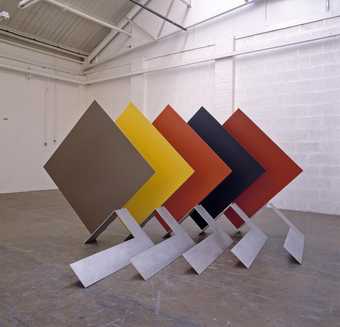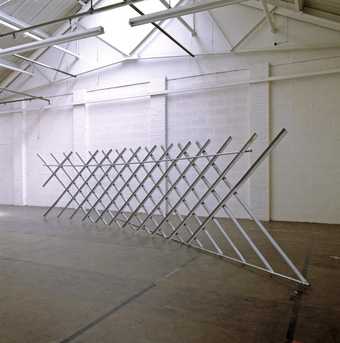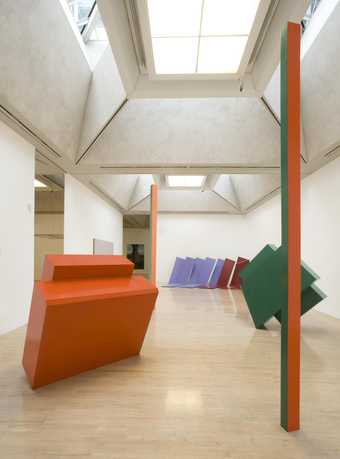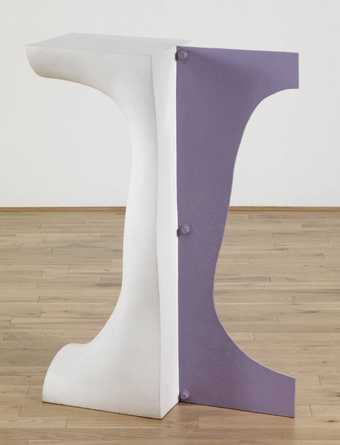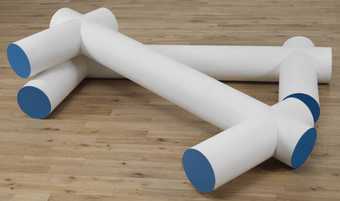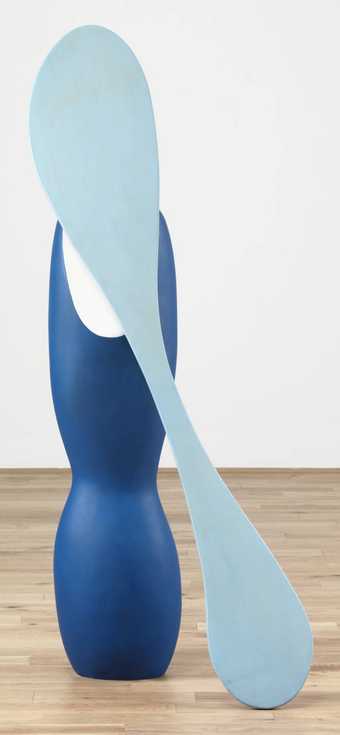Not on display
- Artist
- Phillip King 1934 – 2021
- Medium
- Plastic
- Dimensions
- Object: 2743 × 762 × 762 mm
- Collection
- Tate
- Acquisition
- Presented by Alistair McAlpine (later Lord McAlpine of West Green) 1970
- Reference
- T01206
Display caption
King was one of a number of sculptors who first gained recognition under the label ‘New Generation’, a title derived from an exhibition at the Whitechapel Gallery in 1965.These artists used bright colours and new materials, such as plastic and fibreglass to make sculpture that defied established conventions. Solidity and weightiness gave way to light, open and witty pieces such as this.
Gallery label, May 2007
Does this text contain inaccurate information or language that you feel we should improve or change? We would like to hear from you.
Catalogue entry
Phillip King b. 1934
T01206 Tra-La-La 1963
Not inscribed.
Painted fibreglass, 108 x 30 x 30 (137.2 x 76.2 x 76.2).
Presented by Alistair McAlpine 1971.
Coll: Alan Power.
Exh: Rowan Gallery, February 1964 (7); Nieuwe Realisten, Gemeentemuseum, The Hague, June–August 1964 (129); New Generation, Whitechapel Gallery, March-April 1965 (10, repr.); The Alistair McAlpine Gift, Tate Gallery, June-August 1971 (22, repr. in colour).
Lit: Anne Seymour, in catalogue of The Alistair McAlpine Gift, 1971, pp.65–71.
Repr: Artforum, III, May 1965, p.35.
‘Tra-la-la’ is the last of a series of sculptures including ‘Ripple’ 1962 and ‘Circlerette’ 1963 which the artist produced while he was working on the conical pieces such as ‘Rosebud’ 1962 and ‘Genghis Khan’ 1963 (T01236). The artist regards the former series as a side-issue to his central concerns. In T01206 he resolves the idea of fluidity and solidity in a linear way rather than giving them the expansive spin with which he inverts the cone sculptures. King worked on a number of different ideas for T01206. At one stage he conceived that the sculpture should be of two twisting lines which fused to form a solid.
Published in The Tate Gallery Report 1970–1972, London 1972.
Explore
- abstraction(8,615)
-
- non-representational(6,161)
-
- colour(2,481)
- geometric(3,072)
- irregular forms(2,007)
You might like
-
Phillip King Nile
1967 -
William Tucker Anabasis I
1964 -
Phillip King Genghis Khan
1963 -
Michael Bolus 5th Sculpture
1963 -
Michael Bolus 8th Sculpture
1963 -
Michael Bolus 11th Sculpture
1963 -
Michael Bolus 7th Sculpture
1965 -
Michael Bolus 5th Sculpture
1966 -
Michael Bolus 1st Sculpture
1967–8 -
Michael Bolus 1st Sculpture
1970 -
Michael Bolus Untitled
1971 -
Phillip King Call
1967 -
William Tucker Margin I
1962 -
William Tucker Series A No. 1
1968–9 -
Isaac Witkin Alter-Ego
1963


